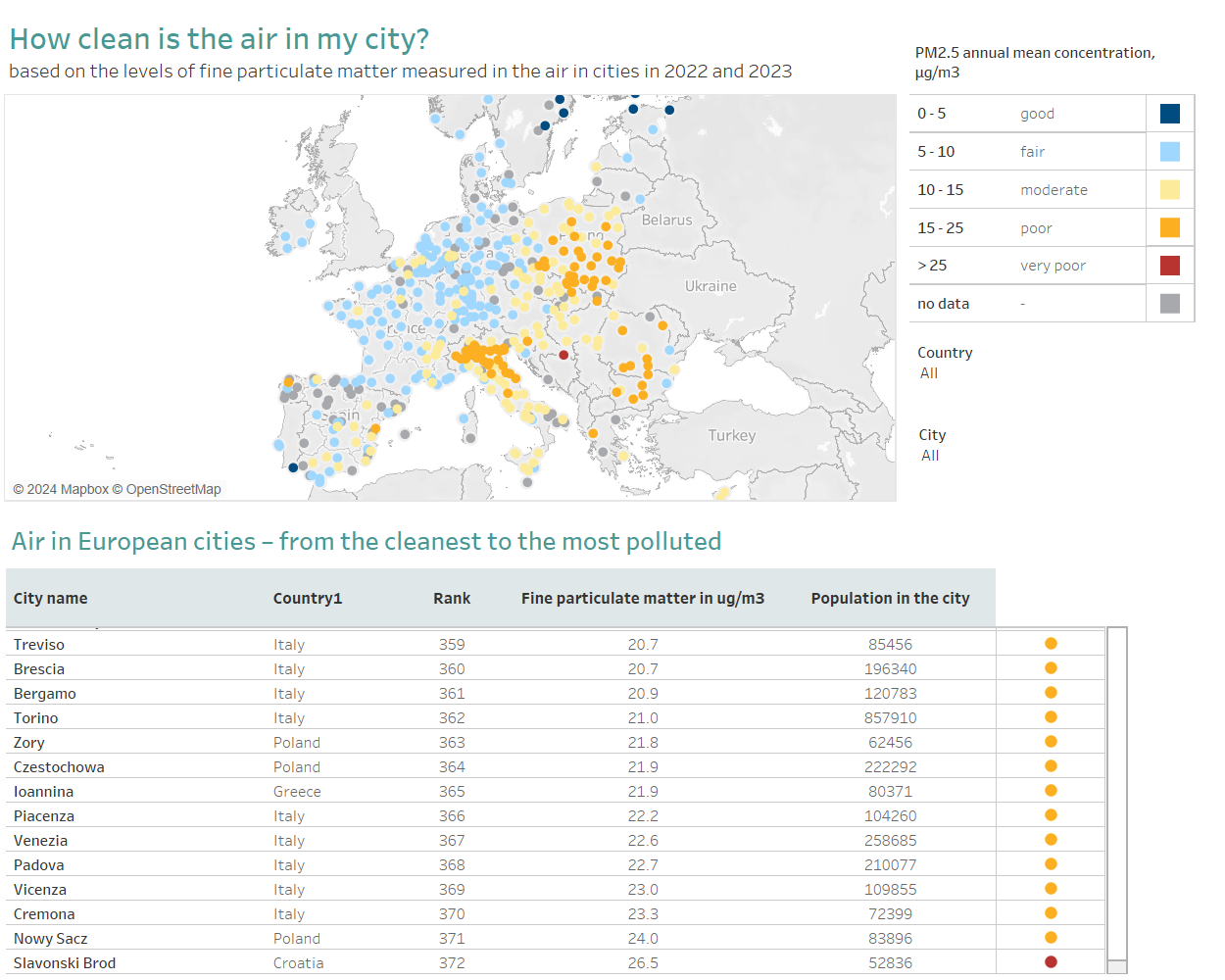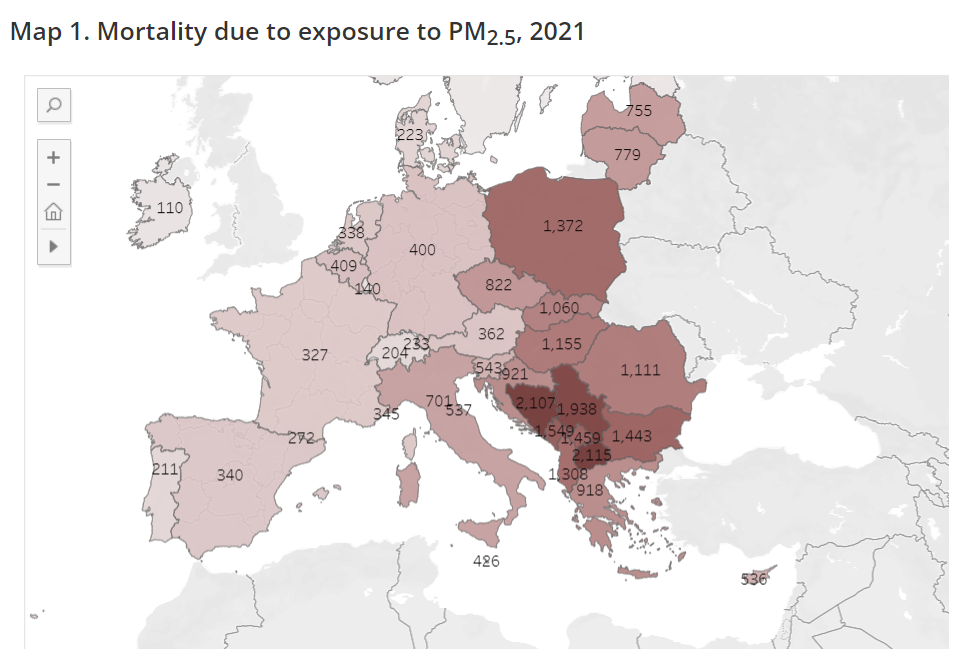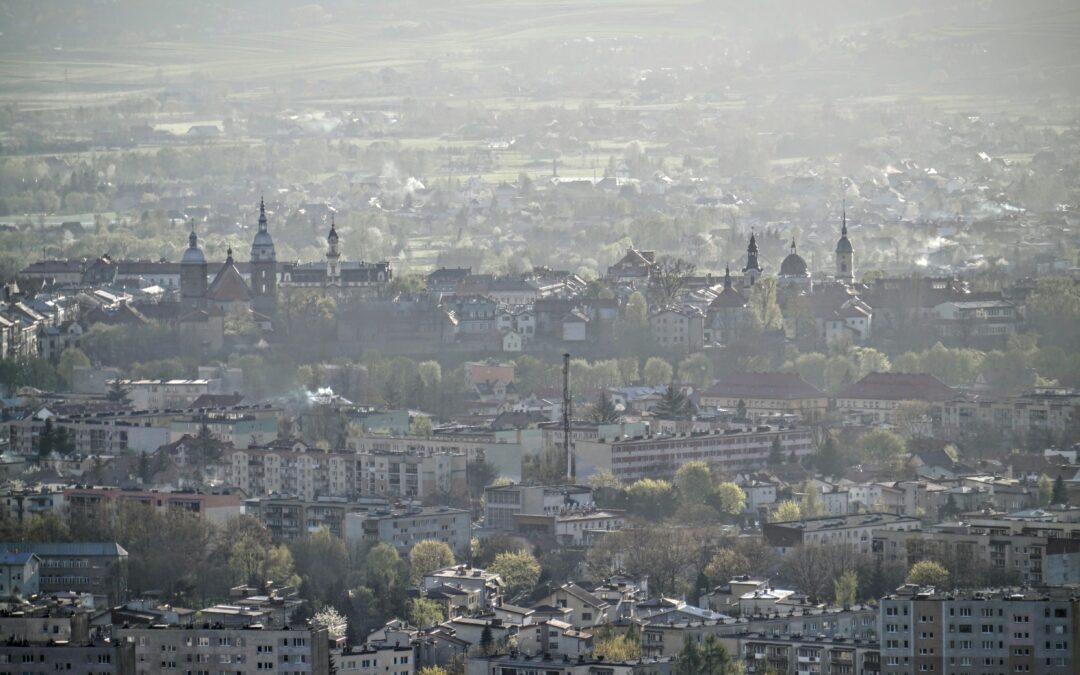Nowy Sącz has the EU’s second-most-polluted air, with two other Polish cities also featuring among the worst ten in the European Environmental Agency’s (EEA) latest ranking of urban air quality. Poland as a whole also has the highest annual number of deaths linked to air pollution, according to the EEA.
However, Poland’s results are better than three years ago, with Polish cities showing a reduction in air pollution.
The ranking looks at the level of fine particulate matter – the type of air pollutant that has the highest impact on health in terms of premature death and disease – in 372 EU cities across the years 2022 and 2023.

The most polluted city was Slavonski Brod in Croatia, with a measurement of 26.5 µg/m3. That made it the only place in the EU with air classified as “very poor” by the EEA.
It was followed in second place by Nowy Sącz (24.0 µg/m3). Częstochowa (21.9 µg/m3) and Żory (21.8 µg/m3) occupy ninth and tenth place respectively. All three cities are located in the south of Poland, where air quality is notoriously bad, particularly during winter, when many homes burn coal for heating.
Among the remainder of the ten most polluted cities, five are in Italy (Cremona, 23.3 µg/m3; Vicenza, 23.0 µg/m3; Padua, 22.7 µg/m3; Venice, 22.6 µg/m3; and Piacenza, 22.2 µg/m3) while one is in Greece (Ioannina, 21.9 µg/m3).
Sorry to interrupt your reading. The article continues below.

Notes from Poland is run by a small editorial team and published by an independent, non-profit foundation that is funded through donations from our readers. We cannot do what we do without your support.
The latest ranking, however, shows an improvement for Poland compared to three years ago, when five Polish cities were among the ten most polluted in the EU.
Pollutant levels in individual cities have also fallen: from 27.3 µg/m3 to 24.0 µg/m3 in Nowy Sącz and from 24.9 µg/m3 to 21.8 µg/m3 in Żory, for example.
Three years ago, Kraków, Poland’s second-largest city, was among the EU’s ten most polluted, with a figure of 24.7 µg/m3. Now it is the 20th most polluted, with a figure of 19.5 µg/m3. Warsaw, the capital, has gone from 17.0 µg/m3 to 15.0 µg/m3.
Those declining figures have come amid efforts in recent years by national and local authorities in Poland to improve air quality by helping homeowners install cleaner heating systems and better insulation.
The @WorldBank is lending a further €250 million to finance Poland's “Clean Air” programme.
It aims to tackle some of the worst air pollution in Europe by providing subsidies for households to install cleaner heating systems and improve insulation https://t.co/zTzjn2tRRY
— Notes from Poland 🇵🇱 (@notesfrompoland) April 22, 2024
Nevertheless, Poland still has the EU’s highest number of premature deaths linked to air pollution, according to the EEA.
The agency’s most recent estimates, for 2021, show that 47,300 deaths in Poland were attributable to PM2.5, a type of air pollutant that is deemed the most harmful to human health. That was a higher figure than in any other country.
In terms of years of life lost per 100,000 inhabitants due to PM2.5 – a measure that takes account of population size – Poland’s figure of 1,372 was second only to Bulgaria (1,443) among EU countries.

Main image credit: Jakub Dominik Belski/Wikimedia Commons (under CC BY 3.0)

Daniel Tilles is editor-in-chief of Notes from Poland. He has written on Polish affairs for a wide range of publications, including Foreign Policy, POLITICO Europe, EUobserver and Dziennik Gazeta Prawna.



















